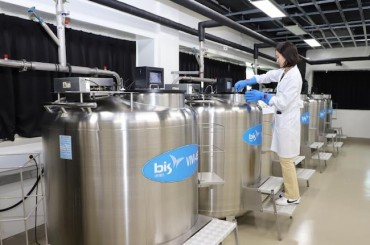
Fine dust and ultrafine dust have negatively impacted these individuals throughout the entire course of their medical treatment. (image: Yonhap)
SEOUL, Feb. 22 (Korea Bizwire) — A recent study revealed that fine dust and ultrafine dust can be critical to the survival of respiratory patients.
Higher fine dust levels typically result in more patients being hospitalized for various respiratory diseases, including asthma, chronic obstructive pulmonary disease (COPD), and lung cancer, and increased the death rate among respiratory patients by 1.99 percent.
According to the NHIS (National Health Insurance Service) Ilsan Hospital Research Institute, the analysis of respiratory patients who lived in Seoul between 2006 and 2016 showed that fine dust and ultrafine dust have negatively impacted these individuals throughout the entire course of their medical treatment.
Ultrafine dust, in particular, has been observed to incur more critical damage to the respiratory system.
For asthma patients in a normal environment with average of 25㎍/㎥ of fine dust, every 10㎍/㎥ increase led to a 0.23 percent increase in hospital visits, a 0.53 percent increase in hospitalization, and 0.77 percent increase in emergency situations.
In South Korea, a fine dust watch is declared when fine dust and ultrafine dust levels exceed 150㎍/㎥ and 75㎍/㎥, respectively, for more than 2 hours.
In other words, respiratory patients are still heavily influenced by fine dust, even if the fine dust is at the lowest level.
For asthma patients in a normal environment with an average of 15㎍/㎥ of ultrafine dust, every 10㎍/㎥ increase led to a 0.20 percent increase in hospital visits, a 0.83 percent increase in hospitalization, and 1.55 percent increase in emergency situations.
For COPD and lung cancer patients in a normal environment with an average of 25㎍/㎥ of fine dust, every 10㎍/㎥ increase led to 0.36 percent and 0.47 percent increases in hospital visits, respectively.
Fine dust was also responsible for the rise in the mortality rate among respiratory patients. Starting at 25㎍/㎥ of fine dust, every 10㎍/㎥ increase increased the mortality rate by 1.51 percent.
In the case of ultrafine dust, starting at 15㎍/㎥, every 10㎍/㎥ increase increased the mortality rate by 1.99 percent.
“Fine dust begins to negatively affect respiratory patients even before it reaches WHO standards,” said the institute.
“We are in dire need of stronger anti-pollution programs, particularly for ultrafine dust, which was found to be more destructive than fine dust.”
H. M. Kang (hmkang@koreabizwire.com)






